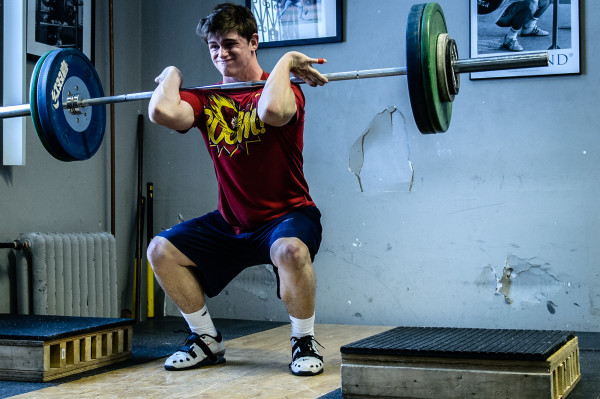
Are you a baseball player? Do you want to hit home runs or do you want your hits to be caught at the wall? If you knock it down the line, does the ball have enough speed and force to beat the third baseman?
Strength and power are without a doubt the deciding factor when you’re up at the plate. If you’re weak or slow, your chances of positively influencing your team’s outcome decrease dramatically. You need to be strong and powerful to overcome the force of a pitch and send the ball flying out of the reach of your opponents. So where do you start?
Building athletes is like building skyscrapers. Every building that awes and inspires us is built on a solid foundation, and so is every athlete that awes and inspires us. An athlete’s foundation is strength and it’s built from the ground up: squats!
Science tells us that our bodies are designed to transfer our training from the gym to our everyday activities and sports performance. This means developing movement skills that transfer from the gym to the field and increasing strength, speed and efficiency through those movements. The baseball swing is a complex motor patter that requires rotary strength, explosiveness, maximal rotational speed, coordination, and energy transfer.
You probably think squats and swinging a bat have nothing in common. Think again!
What’s the first part of your body to move when you swing? Your LEGS! Watch a player at the plate shift their weight onto their back leg, initiating the rotation from the bottom up, pushing with the back leg, transferring power through the hips, torso and arms, all the way through the bat.
A powerful swing requires a powerful push that begins from the bottom. Squats develop a strong push, recruiting the same muscles that initiate your swing, and when squats are the basis of your strength program you can expect to add distance to your hits. Creating powerful legs, glutes and hips are the first step in improving your home run ability; secondly, harnessing your new strength and power with specific rotational and bat work will turn raw power and strength into performance on the field.
This type of “special strength” work is inspired by one of the best Olympic hammer throwers of all time: Dr. Anatoly Bondarchuk. The baseball swing and hammer throw require similar strength characteristics, and Dr. Bondarchuk maintains that “weights need to be medium to near-maximal (90 – 100%) to have any effect per session.” This means you need to get STRONG and push your body to perform.
So if your intensity isn’t up to par, don’t expect your training sessions to have much of an effect on your batting percentage. Improve your RBI, get on base, smash home runs; but first, make sure you’re squatting and you’re doing them SAFELY at the right weight.
Bondarchuk, A., “Hammer Throwing” in Text Book of Track and Field Athletics, 1982, Moscow Press, Translated by R. Wagner and I. Veltman 1986.
Young, W.B., Transfer of Strength and Power Training to Sports Performance, International Journal of Sports Physiology and Performance, 2006; 1:74-83
Leave A Comment